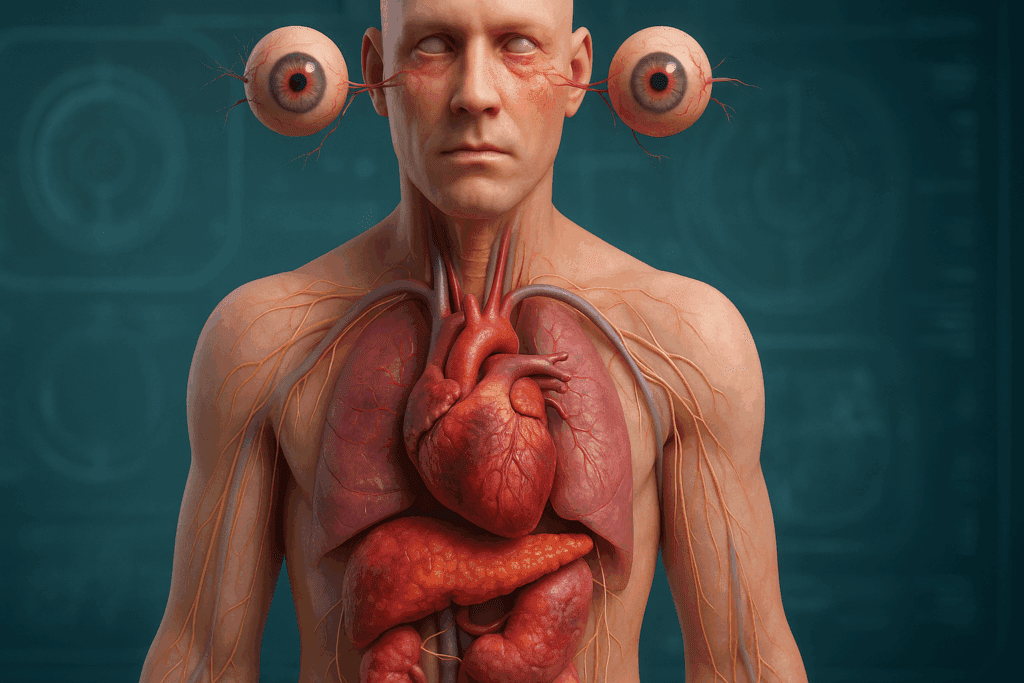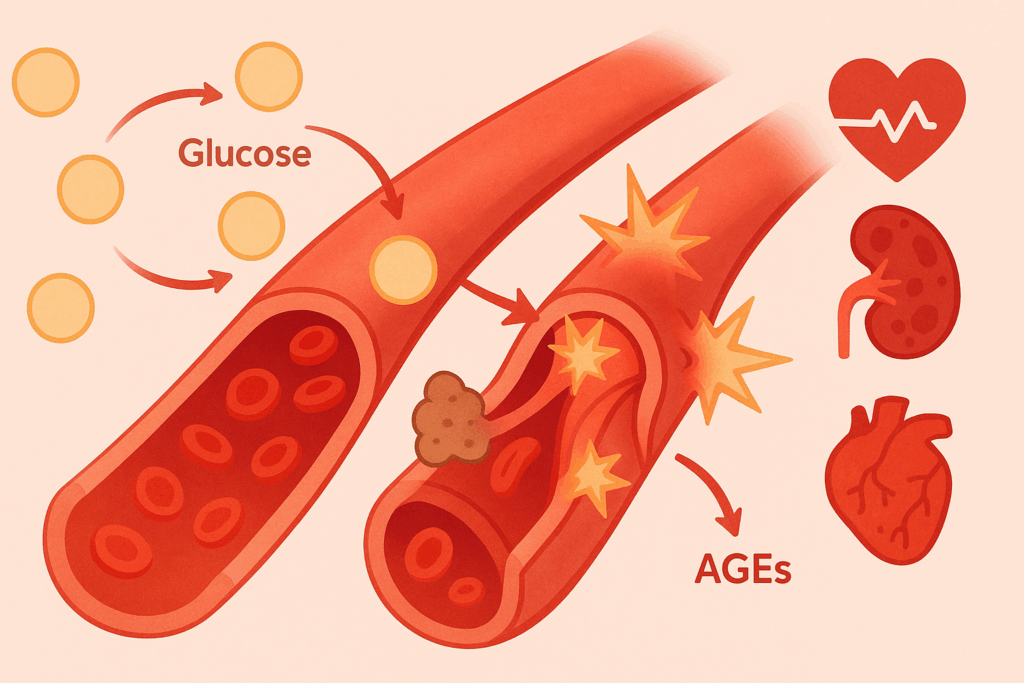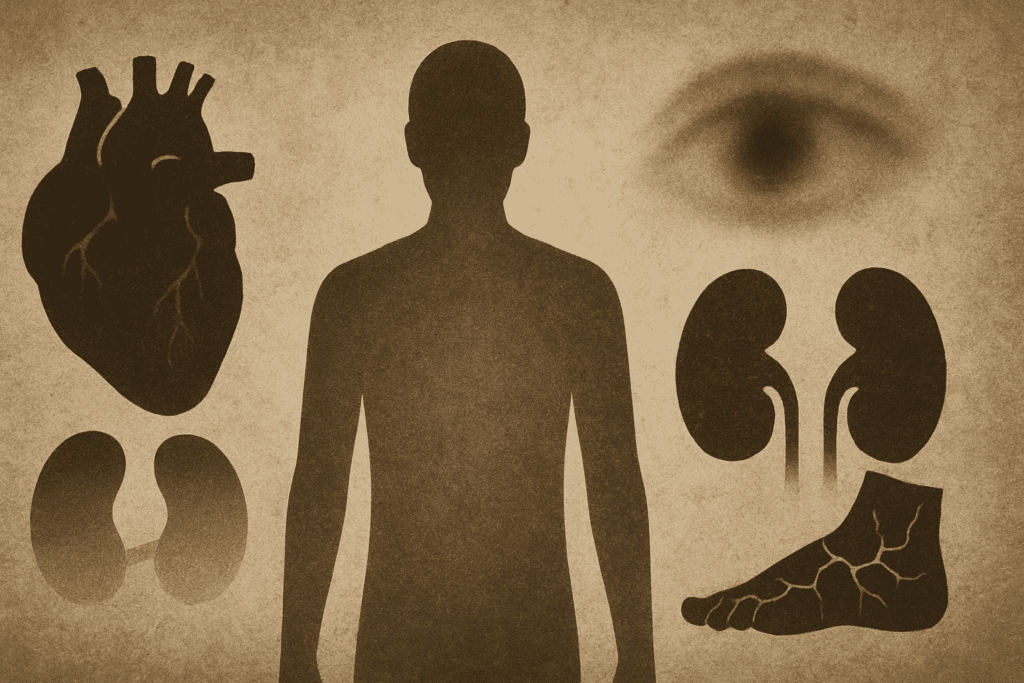Introduction: The Seriousness of Type 2 Diabetes and Its Mortality Risks
Type 2 diabetes, a condition that affects millions of people globally, is often perceived as a manageable disease. However, the question arises: can people die from diabetes? While medical advancements and lifestyle changes have significantly improved the management of diabetes, it remains a leading cause of death worldwide. In fact, recent studies suggest that diabetes mortality rates continue to rise, making it imperative to understand the risks and the ways it can ultimately lead to death.
You may also like: Breakthroughs in Current Diabetes Research: What the Latest Studies Reveal About Treatment and Prevention
Diabetes itself does not directly cause death, but the complications associated with it can significantly increase the risk of fatal outcomes. The question that many people ask is, can you die from diabetes? To address this, it’s crucial to explore how the disease progresses and what factors contribute to mortality in those living with the condition. Additionally, understanding the mechanisms behind how diabetes kills will shed light on the importance of early intervention, proper management, and lifestyle changes.
This article delves into the medical realities of type 2 diabetes mortality, examining both the direct and indirect factors that lead to death. We will explore the morbidity rate of diabetes, the common causes of death related to the disease, and the steps that can be taken to reduce these risks. With a focus on credible medical data and expert insights, this article aims to provide a comprehensive understanding of whether type 2 diabetes can kill you, what the diabetes death rate is, and how the complications of this chronic condition impact long-term health.

Understanding Type 2 Diabetes and Its Impact on the Body
Type 2 diabetes is a metabolic disorder characterized by high blood sugar levels, either due to the body’s inability to effectively use insulin or the pancreas’ inability to produce enough insulin. Unlike type 1 diabetes, which often manifests in childhood, type 2 diabetes typically develops in adulthood, although increasing rates in children and adolescents are now a growing concern.
While the disease itself is manageable through lifestyle modifications, medication, and careful monitoring of blood sugar levels, its long-term impact can be devastating if left unchecked. One of the most pressing concerns is the increased risk of complications, including cardiovascular disease, kidney failure, nerve damage, and vision problems. These complications often escalate over time and significantly contribute to the diabetes and death rate, leading many to wonder, does type 2 diabetes kill you?
In fact, diabetes mortality rates are alarmingly high, with cardiovascular disease being the leading cause of death for individuals with type 2 diabetes. According to the American Diabetes Association, people with diabetes are two to four times more likely to die from heart disease compared to those without the condition. This highlights the critical link between type 2 diabetes death rate and cardiovascular complications, demonstrating how diabetes can cause death indirectly by heightening the risks of other fatal conditions.

The Role of High Blood Sugar Levels in Diabetes-Related Deaths
At the core of how diabetes kills lies the role of chronic high blood sugar levels, which, over time, can damage various organs and systems within the body. When blood glucose is consistently elevated, it leads to a process called glycation, where excess glucose attaches to proteins, lipids, and nucleic acids in the body, forming harmful molecules known as advanced glycation end-products (AGEs). These AGEs can cause widespread inflammation and damage to blood vessels, kidneys, nerves, and the eyes.
This damage increases the likelihood of serious complications, such as diabetic retinopathy (which can lead to blindness), nephropathy (which can result in kidney failure), and neuropathy (which can lead to limb amputation). Additionally, the damage to the cardiovascular system, including the development of atherosclerosis (plaque buildup in the arteries), is a significant risk factor for heart attacks and strokes. These cardiovascular events are among the most common causes of death from diabetes, contributing to the staggering mortality rate of diabetes globally.
Understanding the physiological processes that link high blood sugar levels to death is essential in addressing the question of whether you can die from type 2 diabetes. By managing blood sugar levels through diet, exercise, and medication, many of the severe complications can be prevented or delayed, which is why proper treatment is so critical in reducing the risk of death associated with this disease.

Frequently Asked Questions (FAQ) about Type 2 Diabetes and Its Mortality Risks
1. Can people die from diabetes?
Yes, diabetes can cause death if not properly managed. While diabetes itself is not a direct cause of death, its complications can lead to life-threatening conditions such as heart disease, kidney failure, and strokes. The diabetes mortality rate is higher among individuals who experience these complications, especially when blood sugar levels are poorly controlled over time. High blood sugar levels, a hallmark of diabetes, can damage organs and blood vessels, significantly increasing the risk of fatal outcomes. Regular monitoring and treatment can help prevent these complications, but when left untreated, diabetes can kill you.
2. How do people die from diabetes?
There are several ways that diabetes can kill you, with complications playing a central role. One of the most common causes of death in people with diabetes is cardiovascular disease, as high blood sugar accelerates the buildup of plaque in arteries, leading to heart attacks or strokes. Kidney disease is another significant contributor, with diabetic nephropathy potentially leading to kidney failure. In addition, nerve damage from diabetes neuropathy can result in infections or amputations, which may lead to further life-threatening conditions. Managing diabetes effectively can significantly lower the risk of these complications, reducing the type 2 diabetes death rate.
3. Can you die from type 2 diabetes?
While type 2 diabetes itself is not directly fatal, it dramatically increases the risk of death from associated complications. If type 2 diabetes is left unmanaged, the morbidity rate of diabetes can soar, contributing to serious health conditions like heart disease, kidney failure, and nerve damage. In fact, type 2 diabetes death rate statistics show that individuals with poorly controlled diabetes face a significantly higher risk of dying from these complications. Proper blood sugar management through diet, exercise, and medication is crucial for reducing these risks and extending life expectancy.
4. What are the most common causes of death from diabetes?
The most common causes of death in diabetes are cardiovascular-related. Heart disease and stroke are particularly prevalent due to the increased risk of atherosclerosis caused by high blood sugar. Other causes include kidney failure, diabetic retinopathy leading to blindness, and infections resulting from diabetes neuropathy. While these complications can often be managed with early detection and treatment, they remain leading contributors to the diabetes and death rate.
5. Can type 2 diabetes kill you?
Yes, type 2 diabetes can kill you if left untreated. Over time, the disease can lead to serious complications such as heart attacks, stroke, and kidney failure, which contribute to its mortality rate. High blood sugar levels also increase the risk of infections, particularly in individuals who have diabetes-induced nerve damage. The morbidity rate of diabetes continues to climb, emphasizing the importance of regular monitoring, lifestyle adjustments, and appropriate medical interventions in reducing the risk of fatal outcomes.
6. How does diabetes kill you?
Diabetes kills indirectly through the severe complications it triggers. Uncontrolled diabetes, particularly type 2 diabetes, damages blood vessels, leading to heart disease and stroke. Elevated glucose levels cause inflammation and damage to various organs such as the kidneys and eyes, resulting in diabetic nephropathy and diabetic retinopathy, which can both be fatal. Additionally, the diabetes mortality rate is higher in individuals with complications such as infections due to poorly managed diabetic neuropathy. Effective management of blood sugar and associated health risks can mitigate these dangers.
7. What is the diabetes mortality rate?
The diabetes mortality rate refers to the percentage of individuals who die due to complications related to diabetes. Research indicates that people with poorly controlled type 2 diabetes have a significantly higher risk of dying from conditions like heart disease, kidney failure, and infections. This rate underscores the importance of preventive care, such as regular monitoring of blood glucose levels, maintaining a healthy diet, and managing hypertension and cholesterol levels, to help lower the risks associated with diabetes mortality.
8. Can you die from high blood sugar levels?
Yes, high blood sugar levels can lead to fatal consequences over time if not controlled. Persistent hyperglycemia contributes to the damage of organs and systems, particularly the heart, kidneys, and eyes. Chronic high blood sugar can also lead to diabetic ketoacidosis (DKA) in severe cases, a life-threatening condition that occurs when the body produces high levels of ketones in response to insufficient insulin. The type 2 diabetes mortality rate is closely linked to how well an individual can manage their blood sugar levels, as this directly impacts their risk of developing these severe, potentially fatal complications.
9. Can diabetes cause death?
Yes, diabetes can cause death if complications become severe and are left untreated. Type 2 diabetes death rates have increased due to the rising number of people living with the disease, many of whom do not effectively manage their condition. The most common causes of death in individuals with diabetes include cardiovascular events, kidney failure, and stroke, all of which are exacerbated by poor glucose control. Additionally, diabetes mortality is higher in individuals with other comorbidities, such as hypertension or obesity, making comprehensive management essential to prevent fatal outcomes.
10. Does type 2 diabetes kill you?
Type 2 diabetes can kill you if it leads to complications such as heart disease, stroke, or kidney failure. While the disease itself does not directly cause death, its effects on various body systems can lead to life-threatening conditions. With early diagnosis and management, individuals can significantly reduce the risk of these complications. The key to lowering the type 2 diabetes death rate is maintaining normal blood sugar levels, adopting a healthy lifestyle, and adhering to prescribed medical treatments. Over time, proper care can help prevent the potentially fatal outcomes associated with type 2 diabetes mortality.

Diabetes Complications and the Increased Risk of Fatal Outcomes
While high blood sugar is a major contributor to the complications of diabetes, other factors also play a role in increasing the diabetes mortality rate. Hypertension (high blood pressure) is one of the most common comorbidities among individuals with diabetes and significantly increases the risk of cardiovascular events. In fact, people with both high blood pressure and diabetes have a higher risk of heart disease, stroke, and kidney failure, conditions that are among the top causes of death in the diabetic population.
Additionally, diabetes can kill you through its impact on the kidneys, leading to diabetic nephropathy. Chronic kidney disease resulting from uncontrolled diabetes can progress to kidney failure, necessitating dialysis or a kidney transplant. This is another critical area where the diabetes and death rate is elevated, as kidney failure is a leading cause of death for people living with diabetes.
Moreover, type 2 diabetes mortality rates are influenced by the presence of other complications, such as diabetic foot ulcers and infections, which can lead to amputations and other life-threatening conditions. These complications further highlight the importance of early diagnosis and intervention to prevent the severe progression of the disease.
Further Reading:
Can You Die From Diabetes? 6 Complications – Health
Disclaimer
The information contained in this article is provided for general informational purposes only and is not intended to serve as medical, legal, or professional advice. While MedNewsPedia strives to present accurate, up-to-date, and reliable content, no warranty or guarantee, expressed or implied, is made regarding the completeness, accuracy, or adequacy of the information provided. Readers are strongly advised to seek the guidance of a qualified healthcare provider or other relevant professionals before acting on any information contained in this article. MedNewsPedia, its authors, editors, and contributors expressly disclaim any liability for any damages, losses, or consequences arising directly or indirectly from the use, interpretation, or reliance on any information presented herein. The views and opinions expressed in this article are those of the author(s) and do not necessarily reflect the official policies or positions of MedNewsPedia.


